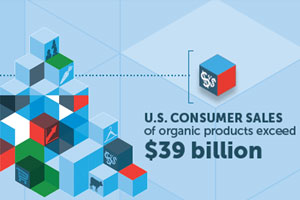If this is worse than expected, have we equally under evaluated the potential rise in global temperatures and the risk of severe environmental of work and life?
Global Water Shortage Risk Is Worse Than Scientists Thought
About two-thirds of the world’s population faces water scarcity for at least one month during the year.
Sheep seen on Manie van Rooys farm on November 6, 2015 near Frankfort,
South Africa. Free State farmers have been severely affected by what is
considered as the worst drought since 1992.
The growing risk of worldwide water shortages is worse than scientists previously thought, according to a new study.
About 66 percent, which is 4 billion people, of the world’s population lives without sufficient access to fresh water for at least one month of the year, according to a new paper published Friday in the journal Science Advances.
Previous studies calculated a lower number, estimating that between 1.7 and 3.1 billion people lived with moderate to severe water scarcity for at least a month out of the year.
Scientists, led by Dr. Arjen Hoekstra of the Netherlands’ University of Twente, used a computer model that is both more precise and comprehensive than previous studies have used to analyze how widespread water scarcity is across the globe. Their model considers multiple variables including: climate records, population density, irrigation and industry.
“Up to now, this type of research concentrated solely on the scarcity of water on an annual basis, and had only been carried out in the largest river basins,” Hoekstra said in a statement. “That paints a more rosy and misleading picture, because water scarcity occurs during the dry period of the year.”
“The fact that the scarcity of water is being regarded as a global problem is confirmed by our research,” Hoekstra added. “For some time now, the World Economic Forum has placed the world water crisis in the top three of global problems, alongside climate change and terrorism.”
About 66 percent, which is 4 billion people, of the world’s population lives without sufficient access to fresh water for at least one month of the year, according to a new paper published Friday in the journal Science Advances.
Previous studies calculated a lower number, estimating that between 1.7 and 3.1 billion people lived with moderate to severe water scarcity for at least a month out of the year.
Scientists, led by Dr. Arjen Hoekstra of the Netherlands’ University of Twente, used a computer model that is both more precise and comprehensive than previous studies have used to analyze how widespread water scarcity is across the globe. Their model considers multiple variables including: climate records, population density, irrigation and industry.
“Up to now, this type of research concentrated solely on the scarcity of water on an annual basis, and had only been carried out in the largest river basins,” Hoekstra said in a statement. “That paints a more rosy and misleading picture, because water scarcity occurs during the dry period of the year.”
“The fact that the scarcity of water is being regarded as a global problem is confirmed by our research,” Hoekstra added. “For some time now, the World Economic Forum has placed the world water crisis in the top three of global problems, alongside climate change and terrorism.”
High-scarcity levels are also widespread in areas with significant irrigated agriculture (like the Great Plains in the United States) or low natural availability of fresh water (like the Arabian Desert) where populations are also relatively dense, according to the study. Similar patterns exist in the south and western United States where heavily populated states like California have been in a drought for years.
The consequences of water scarcity can result in economic losses due to crop failure, limited food availability and poor business viability, and can threaten environmental biodiversity. When faced with scarcity, areas in need of water often resort to pumping groundwater, which can permanently deplete the supply.
Water shortages have also precipitated or heightened the potential for global conflicts in places like the Middle East and Africa.
“Freshwater scarcity is a major risk to the global economy,
affecting four billion people directly,” Hoekstra told The New York
Times. “But since the remaining people in the world receive part of
their food from the affected areas, it involves us all.”






